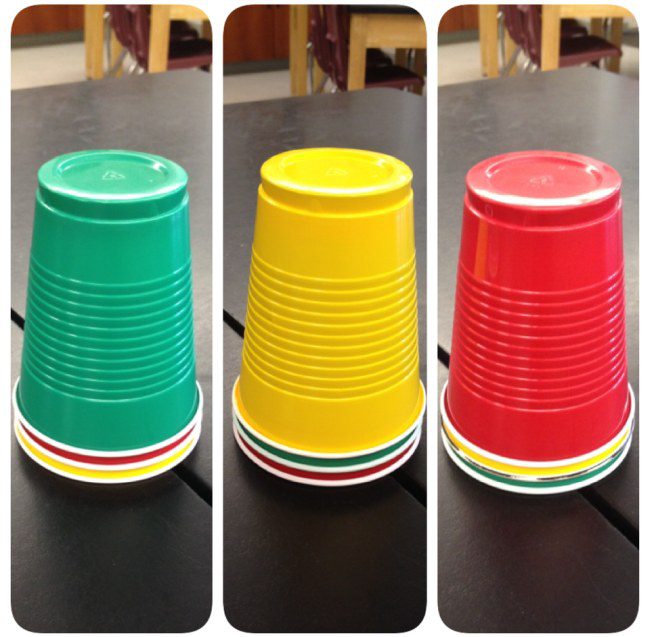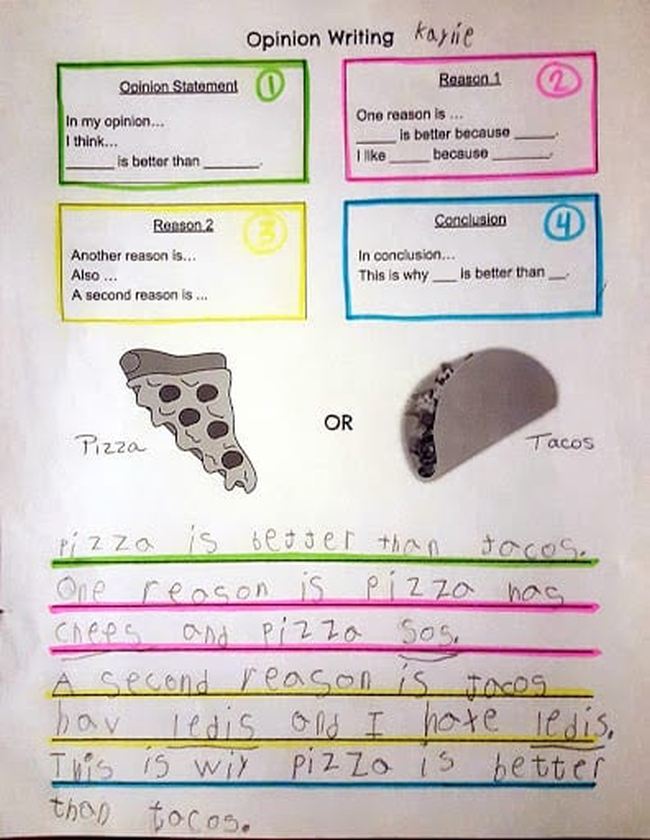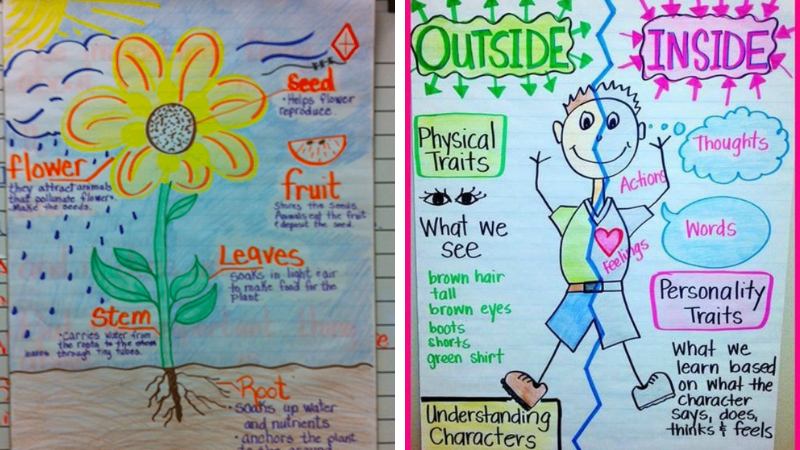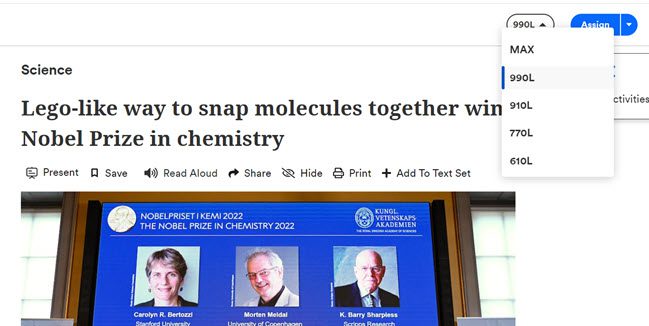[ad_1]
As a teacher, you already know that every student in your classroom is different. They have their own personalities, their own likes and dislikes, and their own ways of learning best. That’s why differentiated instruction strategies are so important. They give every kid a chance to succeed by adapting the learning to fit their needs. Add these differentiated instruction strategies to your teacher toolkit so you can pull them out and use them as needed.
More differentiated instruction resources:
1. Stoplight system

An important part of using differentiated instruction strategies is knowing when they’re needed in the first place. Try an easy way to check for understanding by giving students a non-verbal way to show where they are. Green means they’re good to go, yellow means they’re struggling, and red means they’re stuck entirely. Try this with sticky notes, folded desk tents, colored cups, and more.
Learn more: Stoplight System at the Ardent Teacher
2. Pre-teaching
Getting ready to tackle a really tough topic? Try pre-teaching a smaller group of students first. This gives you a chance to try out your lesson plan, plus it creates a built-in group of “experts” to help you out when the whole class is learning. Use this strategy regularly, but switch up the student experts. Teaching others helps kids learn too.
Learn more: Pre-Teaching at Continually Learning
3. Evens or odds
Some kids feel overwhelmed when they have to complete an entire worksheet. Practice is important, of course, but it’s better that they focus well on fewer problems than give up halfway through. Assigning just evens or odds to students who work more slowly allows them to get the practice they need without spending far more time than their peers.
Learn more: 8 Ways to Differentiate a Worksheet at Classroom Tested Resources
4. Cooperative Learning structures
Cooperative Learning describes a strategy where students work together in small groups under supervision to accomplish a goal. These groups are carefully constructed based on student needs, abilities, and learning styles. It means knowing your students well, but once you do, you can put these groups together quickly depending on your current activity.
Learn more: Top 10 Cooperative Learning Structures
5. Projects with choices
When you offer choices, students feel more comfortable with the assignment. Plus, they often get a sense of ownership—being allowed to pick and choose encourages kids to take responsibility for their choices. To make this work, determine what goals all students need to achieve. Then, let them come up with ways to demonstrate those goals, or give them a few options that appeal to different types of learners.
Learn more: Raki’s Rad Resources
6. Self-paced learning
One of the best things technology has given us is a better ability to use self-paced learning in and out of the classroom. When you use computer programs and games, kids can advance at the pace that makes sense to them. Of course, you’ll need to ensure students stay on task when they’re working independently. Also, remember that a computer program may only have the ability to explain things one way, so be ready to step in and give kids information in other ways when needed.
Learn more: How To Create a Self-Paced Classroom at Cult of Pedagogy
7. Color coding

One of the best differentiated instruction strategies is color coding. It can work in all sorts of classroom applications, including organization and routines. But you can apply it to learning strategies too. Color helps kids see things more clearly, especially when the subject is complex.
Learn more: Color-Coding in the Classroom
8. Small groups
Elementary teachers have been using small reading groups as a differentiated instruction strategy for years. Really, they work in any subject, offering teachers a chance to get more face time with their students. You can group students by skill level, but that’s not necessarily the best way to help learners. Consider grouping by learning styles instead, so you can tailor a lesson’s delivery specifically for those styles.
Learn more: Your Questions About Small Groups Answered
9. Student-led lessons
Assign students a topic or let them pick their own, then ask them each to become an expert and plan a lesson to share with the class. This goes beyond just giving a presentation. Encourage them to think of creative ways to share the information, planning interactive activities they themselves would like to do in the classroom. You’re bound to get a lot of new teaching strategies yourself!
Learn more: Student-Led Lessons Rather Than Student Presentations
10. Question wait-time
This one is all about teacher patience. When you ask your class a question, don’t immediately call on the first person to raise their hand. Instead, wait a few more seconds, and call on someone whose hand came up a little later. This allows slower, more thorough thinkers a chance to get their ideas heard too.
Source: The Thinker Builder
11. Classroom environment
When you’re reading a book, what’s your favorite position? Curled up on the couch with a pillow under your head? Stretched out on your stomach on your bed? Sitting upright at a table with a cup of tea? Can you handle background noise like music, or do you prefer it to be completely silent? Your students’ choices would be just as varied as your own. Whenever you can, allow them to sit, stand, or even stretch out. Help them control distractions with noise-cancelling headphones, or let them listen to music with earbuds if it helps them concentrate.
Learn more: 8 Types of Learning Spaces to Include in Your Classroom
12. Anchor charts

Good news! Those anchor charts hanging all over your walls are a popular differentiation strategy. They help visual learners succeed, giving them strong images to relate to key skills and topics. You don’t need to be an artist to make great charts, but the more color, the better.
Learn more: Anchor Charts 101
13. Co-teaching
Just as students have different learning styles, teachers have different instructional styles as well. Use this to your advantage! You don’t necessarily need to co-teach full-time. Work as a team with your fellow teachers to learn what their style is like, and consider switching things up from time to time by trading duties for certain lessons or subjects.
Learn more: 8 Things Successful Co-Teachers Do
14. Peer buddy program
Pairing students of varying levels as buddies benefits all kids. Some schools pair those with disabilities with a buddy to help them as needed. Others pair older students with younger ones. Whatever you choose, plan your program carefully and monitor pairings to ensure they’re working out.
Learn more: A Win/Win for All Students: Expert Q&A on Peer Buddy Programs
15. Must-dos and may-dos
Not all students need extra time; in fact, some finish everything up too quickly! That’s where the ability to provide enrichment activities comes in handy. For any lesson, be prepared with “must do” and “may do” activities. This helps kids prioritize the most important items and gives fast finishers meaningful work to do too.
Learn more: The Case for Must-Dos and May-Dos
16. Multiple intelligences
You don’t necessarily need to create multiple activities to cater to your students’ multiple intelligences. For example, if you’re reviewing a timeline of the American Civil War for an upcoming test, give each student an index card with a major event (e.g., Fredericksburg, Gettysburg, etc.), and while playing Civil War–era music, ask students to line up in front of the class to put the events in order. This single activity activates brain stimulation for six different learning styles:
- Visual-spatial learners use a mental image of the lineup as a mnemonic device.
- Kinesthetic learners get to move around and create a life-size timeline.
- Interpersonal learners communicate with each other to decide where to stand in line.
- Musical-rhythm learners benefit from the background music.
- Logical-mathematical learners thrive on creating a chronological line.
- Verbal-linguistic learners review notes and their textbooks during the activity.
Learn more: Understanding Multiple Intelligences for the Classroom
17. Leveled materials

Leveled reading materials are another strategy that has been around for years, mostly for teaching kids how to read. These days, though, there are more options online that are free or more affordable than keeping dozens of different versions of the same books on hand. Sites like Newsela allow you to change the reading level as needed and assign that reading directly to your students. Just remember that while reading levels are helpful, you shouldn’t let them define your students or limit what they choose to read.
Learn more: Top 6 Websites Offering Free Leveled Reading Passages
18. Audiobooks
Reading is a key skill, no doubt about it. But when a student struggles with it, it can often affect their learning in other areas too. Unless reading itself is key to the topic you’re presenting, consider letting students listen to an audiobook instead. This lets them focus on the content, rather than just the words and sentences.
Learn more: 10 Places Kids Can Listen to Free Audiobooks
19. Pre-assessments
Before you present a new topic, take a few minutes to find out what kids already know. Their responses might change how you decide to teach, especially if you find they’re lacking in prerequisite knowledge or already understand the new subject pretty well. Tip: Save time by checking out Kahoot! for pre-made quizzes on your topic.
Learn more: 6 Benefits of Pre-Assessment at Minds in Bloom
20. Alternative assessments
Written tests aren’t the only way to check for learning, as teachers well know. Alternative assessments provide ways to differentiate in your classroom, by giving students multiple ways to show what they know. For students who struggle with writing, consider a discussion instead (unless you’re specifically working on writing skills). Instead of a traditional book report, have students turn the story into their own graphic novel. Find ways to help students shine!
Learn more: 25 Alternative Assessment Ideas
21. Accommodations
An out-of-the box way to find more differentiated instruction strategies is to explore lists of the classroom accommodations used to created IEPs and 504 plans. These include terrific ways to differentiate, even when students don’t have specific written plans. You don’t need to be diagnosed with dyscalculia to benefit from using graph paper to line up your math problems. Typing is easier than handwriting for lots of people. Reviewing an example list can spark ideas for all of your students.
Learn more: Ultimate List of IEP Accommodations, Modifications & Strategies
What are your go-to differentiated instruction strategies? Come share your ideas and ask for advice in the WeAreTeachers HELPLINE group on Facebook.
Plus, read What Is Scaffolding in Education?
[ad_2]
Source link